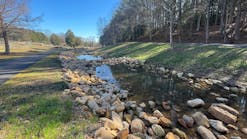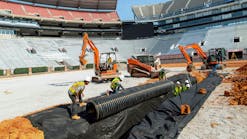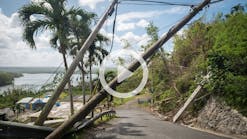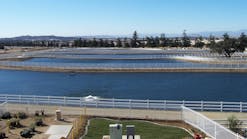Wisconsin Pond Helps Prevent Rising Water
River Falls, Wis. water levels have been receding and other cities in the area have been coping with the rising flood waters.
According to the River Falls Journal, water could not soak when the snowmelt started and few spots in town had water causing small flooded areas across roads.
Some storm water sewers were filled with ice following rain, said Mike Stifter, Operations Director. Additionally, ponds were filled and overflowed after the rain events, according to the Journal.
Senior Civil Engineer Crystal Raleigh said no places in the area had water deeper than about 6 to 8 in. on the road.
"We design it so that it only gets that deep before it overflows the next thing and heads down stream," Raleigh said to the Journal.
In the town, building openings must be a foot higher than the prediction for an "emergency overflow height of ponding water might be," according to the Journal.
If inlets or outlets are clogged, the water is only allowed to be around 6- to 12-in. deep across a street, Raleigh said. "Everything is designed to prevent it from getting any deeper," she said to the Journal.
"That keeps us in the situation that we are in, where we don't have a lot of property damage," she said to the Journal.
Raleigh added that some residents' basements had water in them.
"There were people affected around town, but the city did not see widespread or severe damage," Stifter said.
Raleigh believed it would have been worse without the ponds, and without the city's storm water planning.
Another factor that helped River Falls has been the Kinnickinnic River, Raleigh said. The river has been "doing fine" and its water levels have been maintaining, unlike the Mississippi and St. Croix rivers which have a "terrible" flooding forecast for this year, Raleigh said.
"The Kinni won't have real significant flooding like that," Raleigh said to the Journal.






